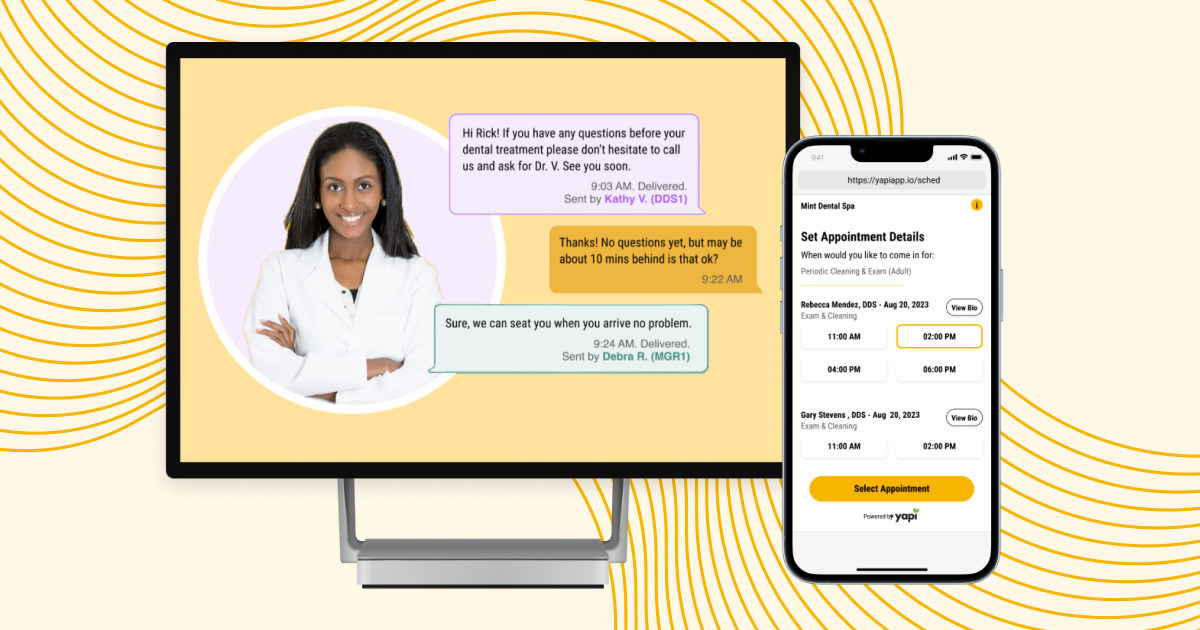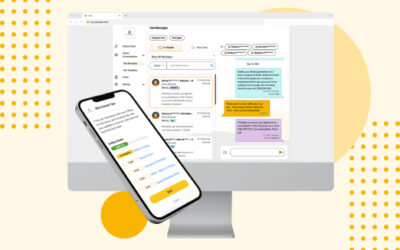
Implementing automation tools has become an important step for growing dental clinics to optimize their operations while maintaining exceptional patient care. By embracing dental automation, practices can improve key aspects such as financial management, appointment scheduling, patient follow-up, patient education, and insurance billing. These automations help save time, improve productivity, enhance patient satisfaction, and reduce costs.
The Evolution of Automation in Dental Practices
The adoption of automation technologies in dentistry has steadily increased over the past decade. Dental practices have implemented automated solutions for administrative, clinical, and patient engagement tasks to maximize efficiency and productivity. From automated patient check-in and scheduling systems to AI-powered radiograph analyses and robotic instrumentation, automation is transforming workflows across the dental field. Thoughtfully leveraging these technologies has allowed dental teams to reduce overhead costs, optimize staff time, improve patient experiences, and expand access to care. However, balancing automation with the human touch of dentistry remains an important consideration. As automation continues advancing, dental professionals have an opportunity and responsibility to evaluate its ethical implementation, prioritize integration with personalized care, and harness its potential to drive positive progress for practices and patients alike.
While automating aspects of a dental practice can bring numerous benefits, it’s important to track key metrics to ensure implementation success. For instance, when automating financial management, it’s essential to monitor metrics like invoice processing speed and collection rate. These indicators help evaluate the efficiency of the system and ensure that the automation is saving administrative hours and reducing costs.
Appointment scheduling automation can free up staff time and reduce the number of missed appointments. To effectively track this, it’s important to monitor metrics such as the number of missed appointments before and after implementing the automation, as well as the rate of appointment reminders sent and confirmed. Sending reminders through multiple channels like SMS and email can further improve the success of the automation. According to a study, electronic appointment reminder methods, such as SMS text and email, had lower no-show rates compared to the phone call method. The SMS text method specifically had the lowest no-show rate of 1.90% among the three reminder methods evaluated.
Automated patient follow-up systems contribute positively to patient satisfaction and retention. To measure their effectiveness, it’s crucial to track metrics such as read and response rates of automated messages. These metrics provide insights into patient engagement and can help identify any areas for improvement.
Implementing automation for patient education involves sending pre-written and pre-scheduled emails or notifications with educational content. Consider sending a post-treatment plan every couple of days with precise information on what the customer may be experiencing and how to best recover. To do this manually to each patient would be a huge burden on staff. However, having tools that make saving and sending this content easy significantly reduces the burden on staff while providing exact care to your patients. To evaluate its success, monitoring patient interaction with these educational resources is vital. Metrics to consider include the number of opens, click-through rates, and feedback received from patients. By analyzing these metrics, dental practices can assess the impact of automated patient education on creating a more informed patient base.
Automating insurance billing can streamline the workflow and lead to quicker reimbursements. Key metrics to track in this aspect include the speed of claims approval and any decrease in errors or denials. Practice owners or financial managers should closely monitor these metrics to ensure a smooth and efficient insurance billing process.
While implementing automation, it’s obviously important to avoid any negative impact on patient care. Dental practices should ensure that automated systems do not compromise the personal touch and individualized care patients expect. Maintaining open lines of communication with patients and providing avenues for direct contact with staff can help address any concerns or issues that may arise.
Compliance is another crucial aspect to consider when implementing automation in dental practices. Practices must adhere to relevant regulations such as HIPAA (Health Insurance Portability and Accountability Act) to safeguard patient privacy and maintain data security. Dental practices should carefully select automation tools and partners that prioritize compliance and offer robust security measures to protect patient information.
Clinical vs Operational Automation: Where to Draw the Line
Operational tasks like appointment scheduling, billing, and insurance verification are prime areas for automation in a dental practice. These administrative processes can be standardized and systematized to optimize efficiency. Clinical tasks, however, often require nuanced judgment calls and a human touch due to their patient-specific nature. While some basic clinical workflows can be automated, more complex procedures involving diagnosis, treatment planning, and hands-on care are best left to trained professionals.
Tread Carefully: Risks and Guardrails in Dental Automation
When applying automation in a dental practice, it is critical to ensure you are not dehumanizing the patient experience. While automating billing, scheduling, and other processes can unlock efficiency, look for opportunities to maintain a sense of human care. You can still let your values come through even in automations. And any automation should ultimately assist, not replace, the expertise and compassion of dentists and hygienists. Likewise, automating front-end tasks like reminders and follow-ups should supplement, not eliminate, warm personal interactions. Setting proper guardrails on automation is key – target mostly operational tasks and maintain human discretion over clinical care. Automation should be thoughtfully implemented to boost productivity behind the scenes while still delivering the compassionate, personalized service patients deserve.
Additionally, make sure you set a review cadence at least annually to go through which automations should be updated. It’s easy to set and forget some automations, and after a year or two, your practice may evolve to a point where you would prefer automations to be handled differently. However, it’s easy to forget these are happening and to miss revisiting them. An example of this is new patient messaging. While it’s a great idea to create automated welcome emails to be sent before a new patient arrives, the forms they may need to fill out could change, or the links to resources may evolve over time. So, adhering to a regular review cycle is important to make sure you don’t accidentally send the wrong message, literally and figuratively, to your patients.
Unlocking the Full Potential of Automation
To fully capitalize on automation’s potential, dental practices need solutions designed specifically for their needs. Yapi offers a comprehensive automation platform covering everything from patient relationship management to paperless forms. By consolidating workflows under one roof, Yapi allows efficient automation of operational tasks across the practice that are compliant and secure. Features like paperless charting, patient communication tools, and key analytics help dental teams work smarter. Yapi’s focus on user-friendly implementation and practice-specific features enable offices to easily integrate it into their workflow. An automation solution purpose-built for dentistry is key to maximizing productivity.
Seamless Integration for Streamlined Operations
For seamless implementation, dental automation solutions should integrate smoothly with existing practice management software like Open Dental, Dentrix, and Eaglesoft. Yapi has developed deep integrations to sync key practice data across these major systems. This means procedures, billing codes, appointment details, patient information, and other critical data flow seamlessly between Yapi and practice management software. There is no need to manually duplicate data or deal with siloed systems. Yapi’s integration capabilities allow dental teams to realize the benefits of automation without disrupting existing workflows. This frictionless implementation experience enables staff to adopt Yapi quickly and focus on more strategic initiatives that drive patient care and business growth. With turnkey integration into the dental technology ecosystem, Yapi unlocks the full potential of automation to streamline operations.
Elevating Your Practice with Automation
Moving forward, seamless integration of automation tools requires a thoughtful selection of software solutions that align with practice requirements and compliance regulations. Dentists must maintain a patient-centric approach throughout the automation journey, prioritizing personalized care and communication. Embracing dental automation empowers dental professionals to focus on meaningful patient interactions, individualized treatments, and proactive oral health management.
Looking ahead, the future of dentistry lies in the continued advancements of dental automation. This includes leveraging innovative technologies to unlock new levels of practice efficiency, amplify patient satisfaction, and drive continuous improvement. By intelligently using dental automation, practices can take advantage of modern software that reduces errors and improves efficiencies, ultimately leading to a more successful practice.
